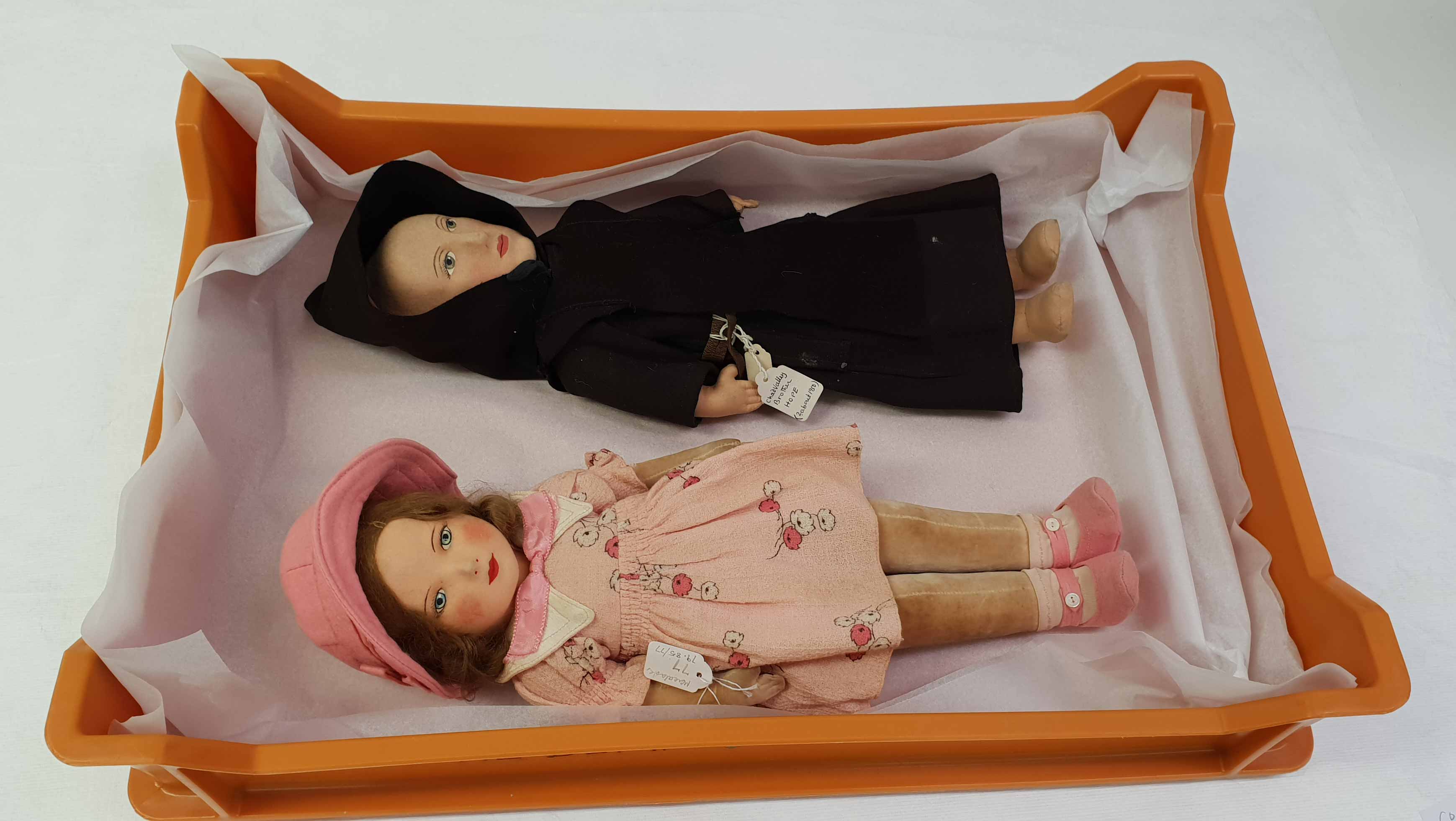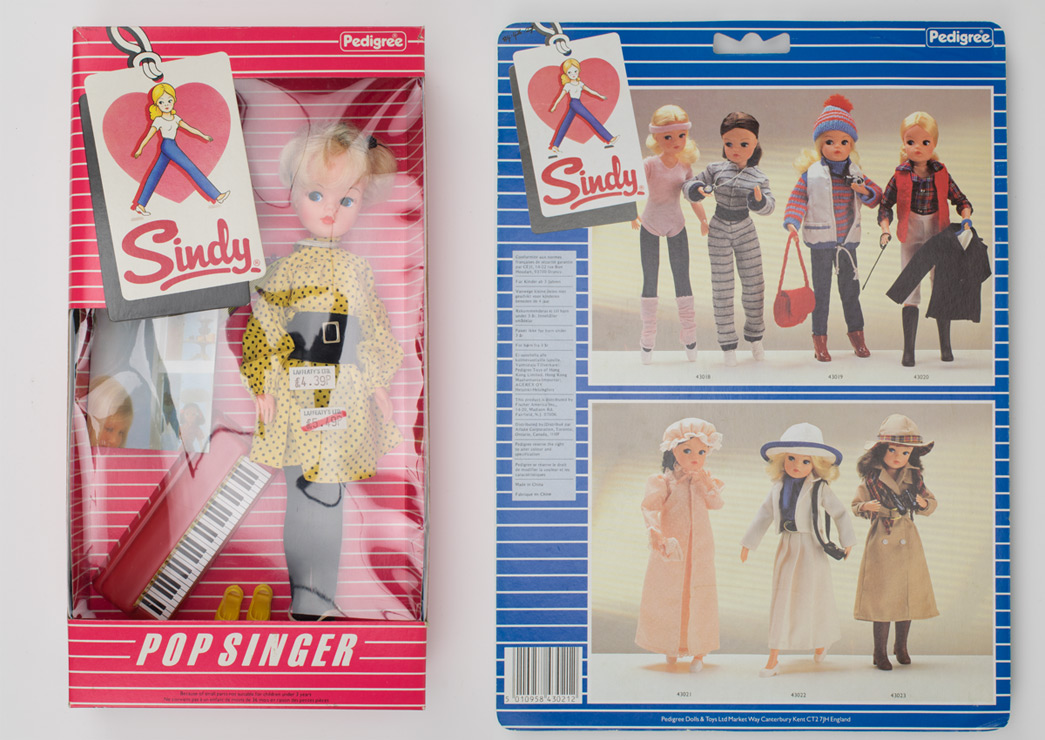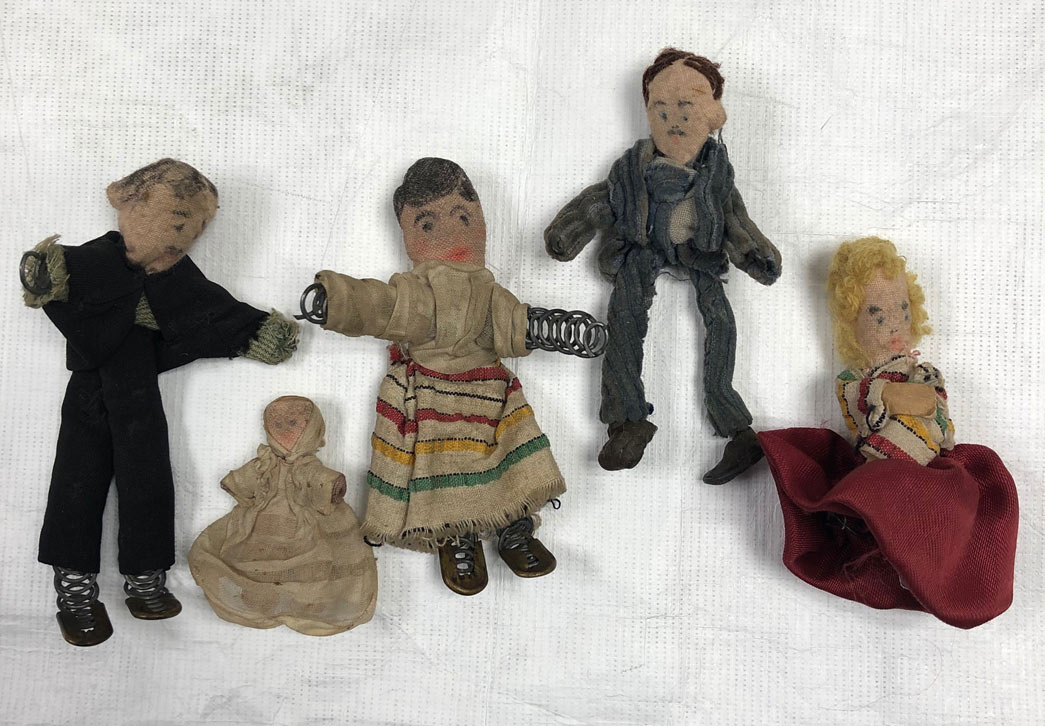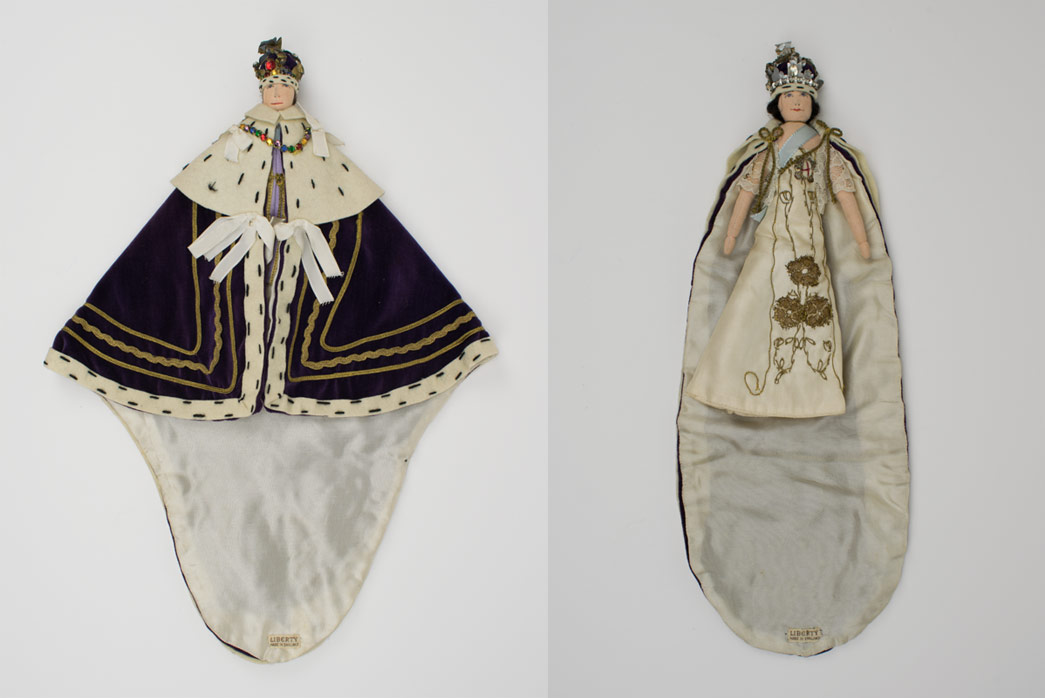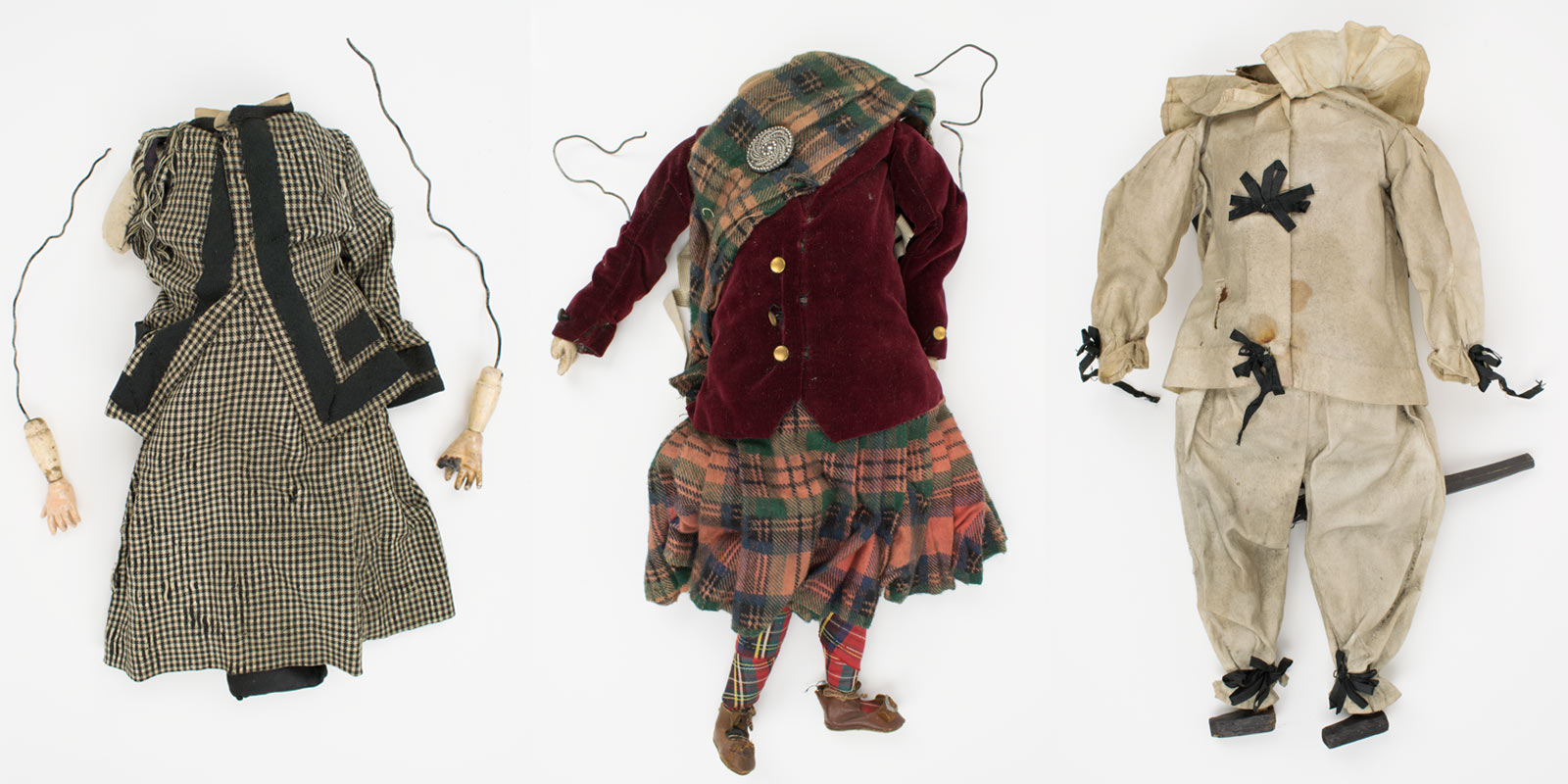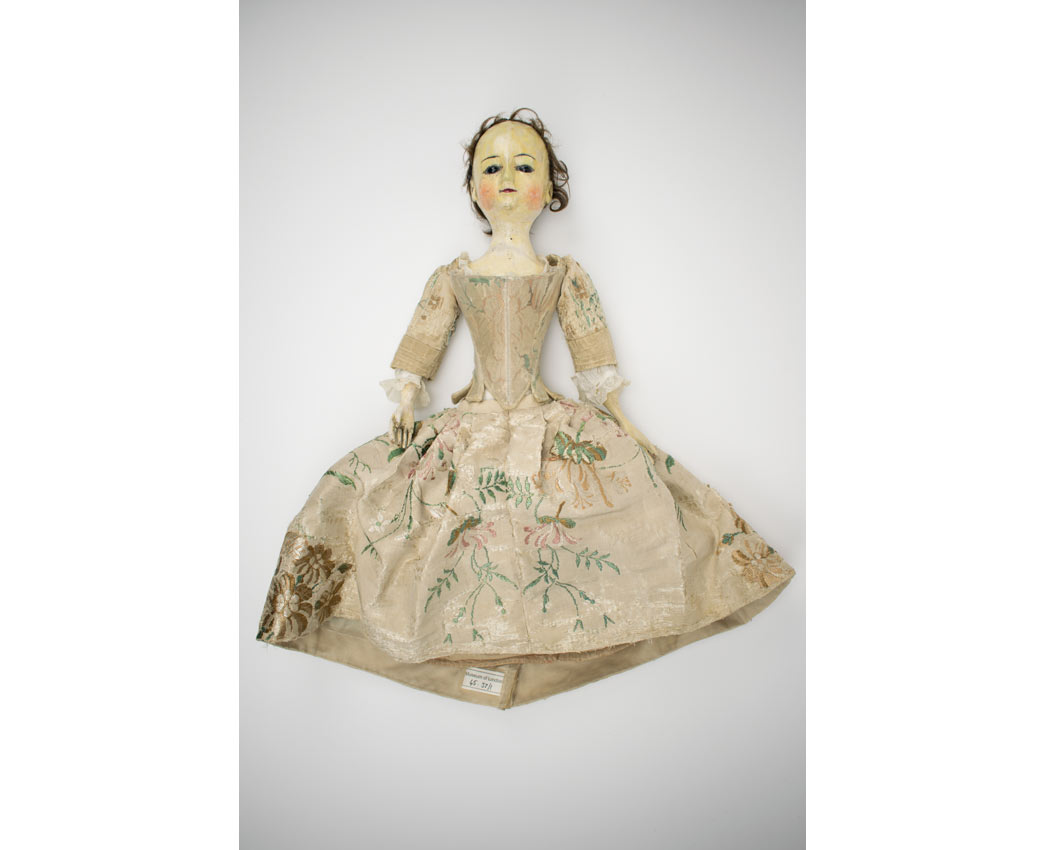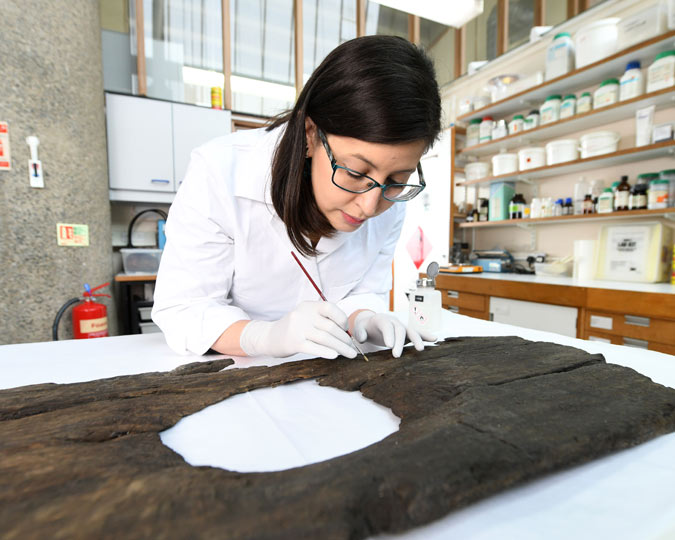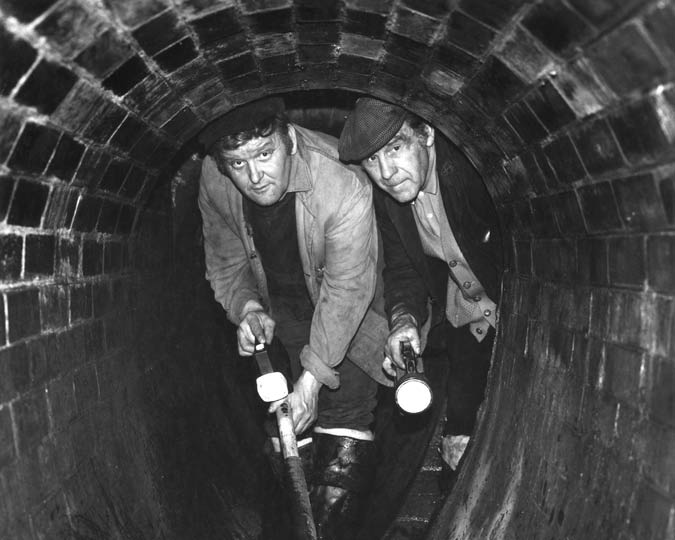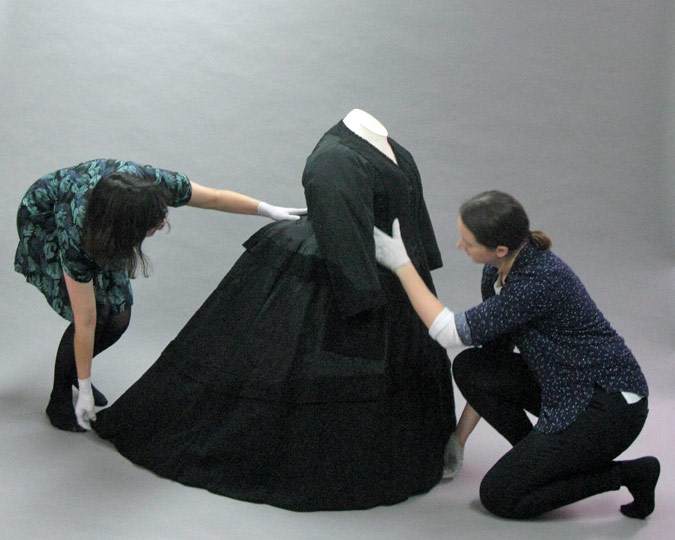The Museum of London holds over 2,000 dolls and accessories, spanning over four centuries. These items document childhood experiences and historical fashions in miniature. As we catalogue and photograph every object, we've met some extraordinary and exciting characters.
The Museum of London Dress and Textile Store holds a staggering 23,000 objects, ranging from medieval textile fragments to 21st century couture. The collection also includes over 2,000 dolls and doll accessories, the earliest dating back to the 1600s. There are an amazing array of styles, from life-like ‘baby dolls’ and modern-day Action Man figures to 18th century fashion dolls and the tiniest knitted accessories. Meet some of our favourite little Londoners!
Stylish Sindy, the teen fashion doll
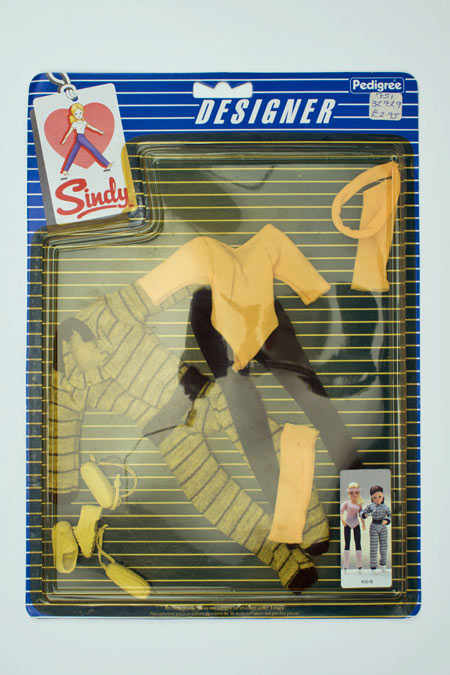
Workout clothes Sindy costume, 1983
The Sindy dolls have been kept in their original packaging, showing exactly how they were presented to potential buyers in the early 1980s. ID no. 84.303/15
Our collection of Sindy dolls capture a moment in fashion, specifically the fashions of 1983-1984. Sindy dolls were first launched by Pedigree Toys in the early 1960s, a period that saw an increased array of fashionable clothing that was aimed at teenagers rather than adults or children exclusively.
The fashion-focused Sindy dolls echoed this trend, with ranges of teen clothing available to suit each Sindy style. Our collection includes a Pop Singer Sindy, who wears a bright yellow polka dot dress and chunky black waist belt straight out of the wardrobe of Cyndi Lauper or Bananarama. We have Sindy work-out clothes, Sindy casual attire, and a fabulous range of Sindy lingerie and nightwear. But perhaps best of all is an outfit that we call ‘Sherlock Sindy’; consisting of a calf-length brown tweed cape, matching fedora hat, and knee-high boots. Very Baker Street chic.
These dolls were collected by the Museum of London in late 1984 for an exhibition of toys and games. Some of the items were purchased from toyshops in Chelsea, such as Lafferty’s on the King’s Road and Toddler Toys on Harriet Street, just off Sloane Street.
Others were donated directly by Pedigree Toys at the request of a Museum of London curator, Amanda Herries. She was passionate about collecting contemporary toys to ensure that all periods were represented within the collections. She wrote to Pedigree Toys: “The more we study toys and games the more important we realise they are, since they so clearly reflect the ‘grown up’ aspects which may well be beyond our efforts.”
Make do and mend dolls, 1943-44
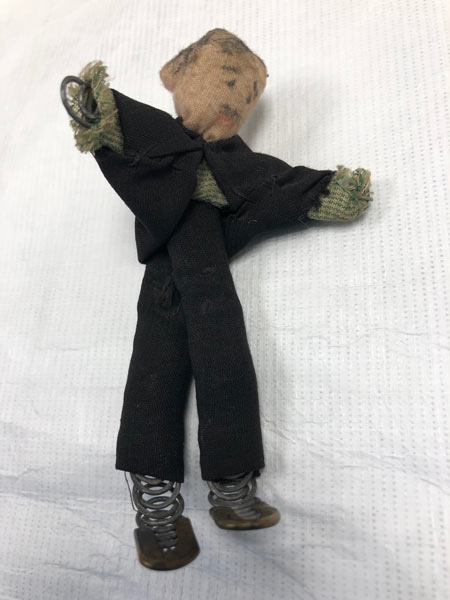
Doll made with corsetry wire
ID no. 74.370/267
These rag dolls were made for Alba Nisbet by her parents during the Second World War, when new toys were in short supply— so the grown-ups had to get creative with their materials. The coiled wire used for the limbs and body is spiral boning, primarily found in corsets and other supportive undergarments (like this 1923 corset from the Symington Collection). The caps that cover sharp wire on the ends of the boning resemble shoes or slippers, and have been creatively used for the dolls' feet by the makers.
Coiled or spiralled metal wire boning was used in corset manufacture from around the 1820s, when they were advertised as “Elastic” corsets because of their comparative flexibility. The spiral form, rather than flat strips of steel, means the boning can bend in two different directions. Corsets were still widely worn at the time of the Second World War, so it is possible the Alba Nisbet’s mother took the boning from a garment that she was no longer wearing.

Make Do and Mend poster, 1943
The heads are made from stuffed cotton, with hair and facial features drawn or painted on. The clothes for the dolls have been made from various scraps of fabrics, likely remnants from clothes worn by the Nisbet family. Three other dolls in the group were similarly made from left over materials including wire, paper, wool, and modelling clay.
Many materials were scarce by 1943-44, as production for the war effort was prioritised over civilian needs. Rationing controlled consumption of certain products including clothing and textiles. Propaganda campaigns such as the famous ‘Make-Do-and-Mend’ posters and booklets encouraged people to be resourceful and recycle materials they already owned. For many families this would have been a familiar practice, but these dolls demonstrate some of the inventive creativity that was commonplace in many London households during the war years.
Liberty's royal costumes, 1937
The department store Liberty of London (also known as Liberty & Co) produced a series of cloth dolls to commemorate the coronation of King George VI in 1937. The range included the King and Queen Consort Elizabeth, the Archbishop, and the Princesses Elizabeth and Margaret, each depicted in fine clothing reflecting the grandeur of the occasion. Our King and Queen dolls were hand sewn from a variety of fabrics with painted facial features and mohair hair.
Their clothing imitates the garments and robes worn by George and Elizabeth for the coronation, shown in these official portraits from the Royal Collection. The coronation was a widely celebrated event that inspired all kinds of commemorative objects for both children and adults. Given these dolls' fine appearance and high quality materials, it is possible they were not intended for play, but as a commemorative ornament for display.
We don’t know who made many of the dolls in our collection, so it is nice to find a pair with such a strong London heritage. Liberty's has been one of London’s most successful department stores since it opened in 1875. It is famous for exquisite textiles, artistic fashions and creative displays.
Headless dolls, 1910-14
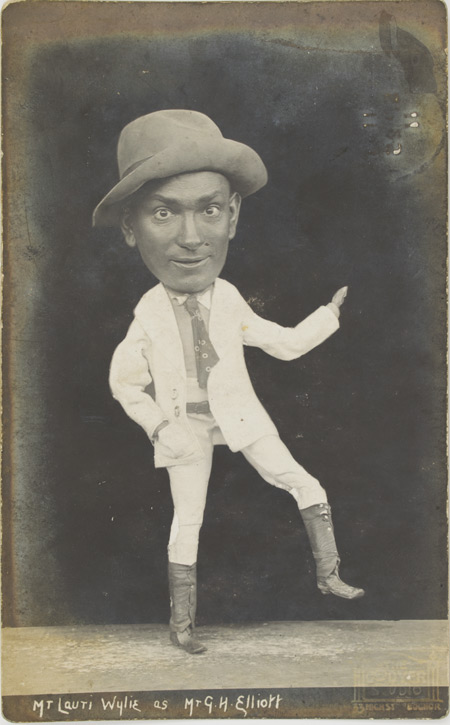
Photographic postcard showing Lauri Wylie performing
These early twentieth century puppets are some of the more unusual objects found within the doll collection. No, they haven’t been cruelly decapitated: they were part of a music hall act in which the puppeteer placed his own head above the body to complete the puppet.
Their puppeteer was Lauri Wylie, a London actor and playwright who also wrote for the film industry. (He is most famous for writing ‘Dinner For One’, which is now the most frequently repeated television programme ever made after becoming a cult classic in Germany). The puppets represent the origins of Wylie’s career in entertainment, and also tell us something about how Londoners liked to spend their spare time in the years immediately preceding the First World War.

Lauri Wylie as "Little Titch" the soldier
The puppets are accompanied by photographic postcards which show the full effect of the act. From the postcards we learn some of the names of the characters; including the soldier ‘Little Titch’, and policeman ‘Mr Arthur Prince’. We have five of Wylie’s puppets, each in a different outfit.
Most recognisable are the policeman, a Highlander in kilt and velvet jacket and a Pierrot in white silk shirt, trousers and ruff. The puppets were controlled by wires inserted at the elbow and sticks at the back of the knees. The photos suggest that Wylie concealed his own body behind a curtain – Punch & Judy style. They may look a little unsettling today, but it seems these dolls were a source of much amusement in their own time.
Georgian doll with human hair, 1750-60
This is one of the older dolls in the collection. Her dress is a fashionable style typical of the period, made from fine floral-patterned silk woven in England. It is similar to the fine Spitalfields silks for which London was famous at this time, examples of which can be seen elsewhere in our collection.
The silk likely dates to between 1746 and 1748, and was probably recycled from a human garment or made using leftover scraps. It is clear that the fabric was not designed for use on such a small scale as the size of the pattern is very large in proportion to the size of the garment. Underneath the silk dress the dolls wears three petticoats and a pair of quilted pockets.
The doll’s body is made from wood, with glass eyes and human hair. The use of human hair in the production of dolls was common in the 18th and centuries. In our collection we have around 60 dolls with human hair from that time, with a few more dating from the earlier years of the 20th century.
Our doll collections offer a snapshot of London lives, and particularly London childhoods, over the last 400 years. They show skill and creativity, demonstrate changes in technology and taste, and reflect the cultures within which they were made and used. The materials may be different, but the human desire to play and entertain remains consistent over time.
Love fashion? Subscribe to our free fashion newsletter to read more stories from our collections, and see upcoming events and exhibitions.








